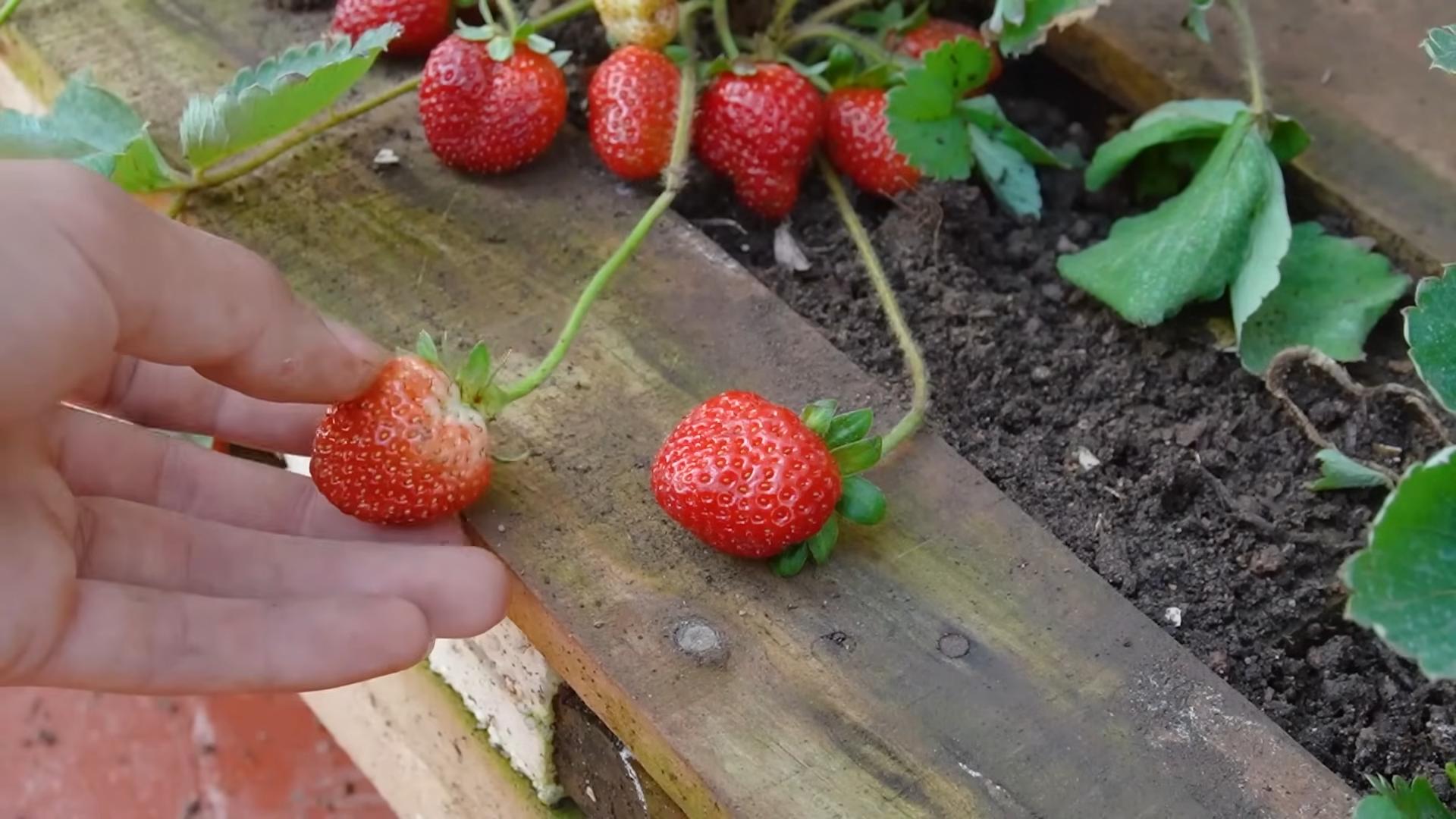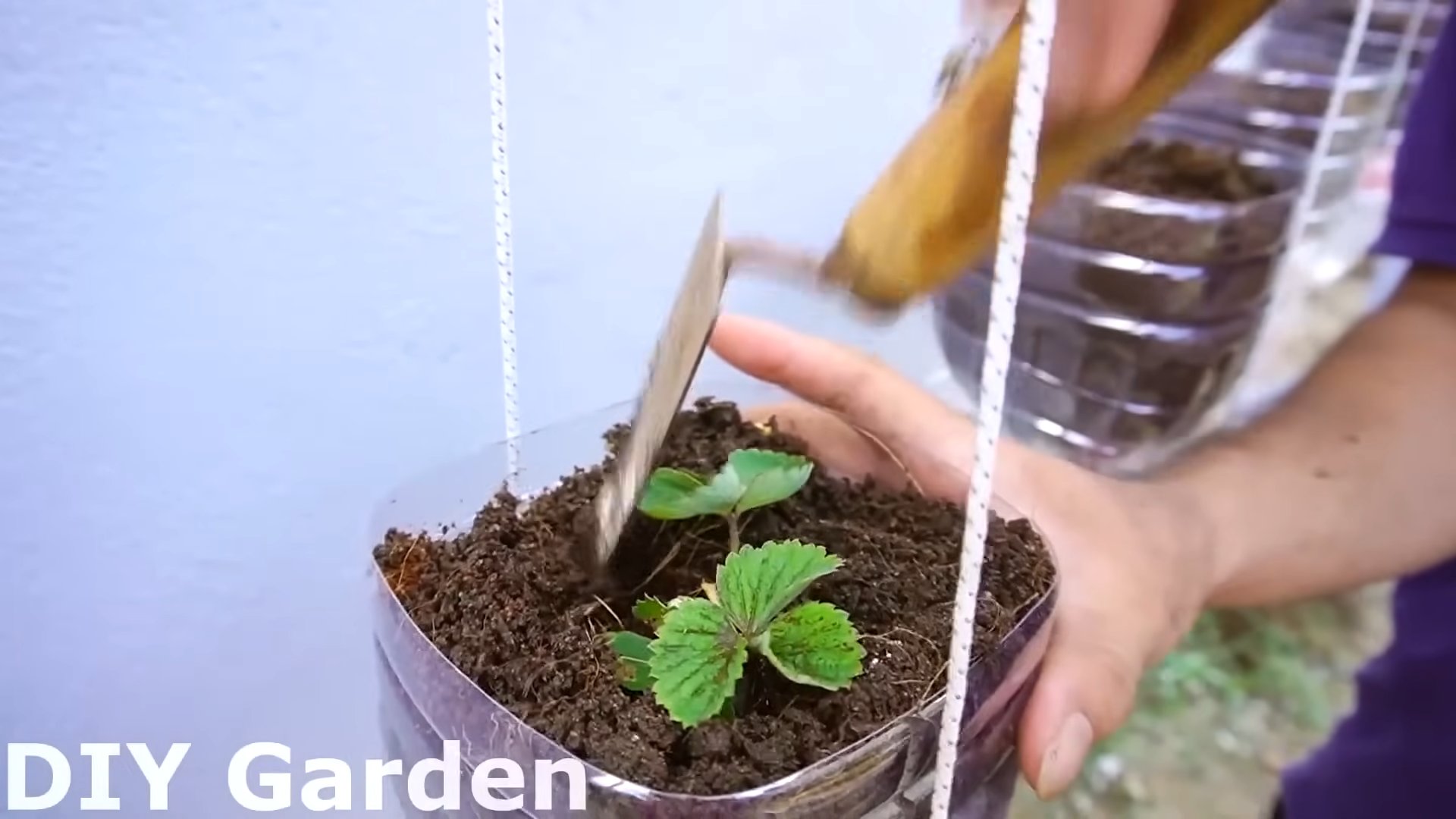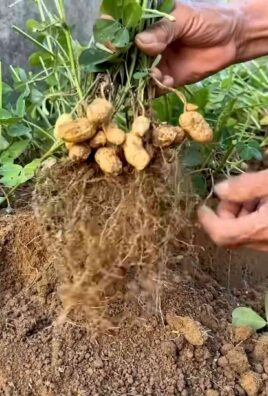Strawberry Growing Tips – who doesn’t love the taste of a sun-ripened, juicy strawberry, fresh from the garden? I know I do! But let’s be honest, sometimes getting those ruby red gems to actually *grow* can feel like a real challenge. Have you ever dreamed of baskets overflowing with your own homegrown strawberries, only to be met with tiny, bitter fruits or, even worse, plants that just refuse to thrive?
For centuries, strawberries have been cherished, not just for their delicious flavor, but also for their vibrant color and perceived health benefits. From ancient Roman gardens to medieval monastery plots, these little berries have held a special place in our hearts (and stomachs!). But you don’t need to be a seasoned gardener to enjoy the fruits of your labor.
That’s why I’ve put together this guide packed with easy-to-follow strawberry growing tips and DIY hacks that will transform your garden into a strawberry paradise. Whether you’re a complete beginner or have a bit of gardening experience, these tricks will help you overcome common challenges, maximize your yield, and enjoy the sweetest, most flavorful strawberries you’ve ever tasted. Forget store-bought berries – with a little know-how, you can have a constant supply of these delectable treats right at your fingertips! Let’s get growing!

Grow Luscious Strawberries: A DIY Guide to a Bountiful Harvest
Hey there, fellow gardening enthusiasts! I’m so excited to share my tried-and-true methods for growing the juiciest, most delicious strawberries you’ve ever tasted. Forget those bland, store-bought berries – we’re talking about homegrown goodness bursting with flavor! This guide will walk you through everything you need to know, from choosing the right variety to protecting your precious plants from pests. Let’s get started!
Choosing the Right Strawberry Variety
Before we even think about planting, it’s crucial to select the right strawberry variety for your climate and growing conditions. There are three main types:
- June-bearing: These produce one large crop of strawberries in the spring, typically over a period of two to three weeks. They’re great if you want a big batch for jam-making or freezing.
- Everbearing: Don’t let the name fool you – everbearing strawberries don’t produce fruit continuously. Instead, they yield two or three crops throughout the growing season: one in the spring, one in the summer, and sometimes another in the fall.
- Day-neutral: These varieties produce fruit continuously throughout the growing season, as long as the temperature is between 35°F and 85°F. They’re a fantastic choice for a steady supply of fresh berries.
Consider your local climate and the amount of sunlight your garden receives when making your decision. I personally love day-neutral varieties because I enjoy having fresh strawberries all summer long!
Preparing Your Strawberry Bed
Strawberries thrive in well-drained, slightly acidic soil (pH 5.5 to 6.5). Proper soil preparation is key to a successful harvest. Here’s how I get my strawberry beds ready:
1. Choose a sunny location: Strawberries need at least six hours of direct sunlight per day. More is even better!
2. Clear the area: Remove any weeds, grass, rocks, and debris from the planting area. Strawberries don’t like competition!
3. Amend the soil: This is where the magic happens! Strawberries are heavy feeders, so enriching the soil with organic matter is essential. I like to add a generous amount of compost, well-rotted manure, or peat moss.
4. Test the soil pH: You can purchase a soil testing kit at your local garden center. If your soil is too alkaline, you can lower the pH by adding sulfur or peat moss.
5. Till or dig the soil: Loosen the soil to a depth of at least 12 inches. This will allow the strawberry roots to spread easily.
6. Create raised beds (optional): Raised beds improve drainage and can help warm the soil earlier in the spring. This is especially beneficial in areas with heavy clay soil.
Planting Your Strawberry Plants
Now for the fun part – planting! You can purchase strawberry plants as bare-root plants or as potted plants. I’ve had success with both, but bare-root plants are usually more economical.
1. Soak bare-root plants: If you’re using bare-root plants, soak the roots in water for about 30 minutes before planting. This will help rehydrate them.
2. Dig the holes: Space the plants about 12 to 18 inches apart in rows that are 3 to 4 feet apart. Dig holes that are large enough to accommodate the roots without crowding them.
3. Plant the strawberries: Place the strawberry plants in the holes, making sure that the crown (the point where the roots meet the stem) is level with the soil surface. Planting the crown too deep can cause the plant to rot, while planting it too shallow can cause the roots to dry out.
4. Backfill with soil: Gently backfill the holes with soil, firming it around the roots.
5. Water thoroughly: Water the newly planted strawberries well to help settle the soil and encourage root growth.
6. Mulch (optional): Applying a layer of mulch around the strawberry plants can help retain moisture, suppress weeds, and keep the berries clean. I like to use straw, pine needles, or wood chips.
Caring for Your Strawberry Plants
Once your strawberry plants are in the ground, it’s important to provide them with proper care to ensure a bountiful harvest.
1. Watering: Strawberries need consistent moisture, especially during fruit development. Water deeply whenever the top inch of soil feels dry. Avoid overhead watering, as this can promote fungal diseases. Drip irrigation is an excellent option.
2. Fertilizing: Fertilize your strawberry plants in the spring, after they have finished producing their first crop of flowers. Use a balanced fertilizer that is specifically formulated for strawberries. Follow the instructions on the fertilizer package.
3. Weeding: Keep the strawberry bed free of weeds, as they can compete with the plants for nutrients and water. Hand-pull weeds regularly or use a hoe to cultivate the soil.
4. Pest and disease control: Strawberries can be susceptible to a variety of pests and diseases, such as slugs, snails, aphids, spider mites, and fungal diseases. Inspect your plants regularly for signs of problems and take action promptly. I prefer to use organic pest control methods whenever possible, such as introducing beneficial insects or using insecticidal soap.
5. Renovating June-bearing strawberries: After June-bearing strawberries have finished producing their crop, it’s important to renovate the bed to encourage new growth and prevent overcrowding. Mow the plants down to about 1 inch above the crown. Thin out the plants, leaving only the strongest ones. Fertilize and water well.
6. Removing runners: Strawberry plants produce runners, which are long stems that grow horizontally and develop new plantlets at the nodes. If you want to maximize fruit production, it’s best to remove the runners. However, if you want to propagate new strawberry plants, you can allow the runners to root in the soil.
Protecting Your Strawberries from Pests and Animals
One of the biggest challenges of growing strawberries is protecting them from pests and animals. Birds, slugs, snails, and even squirrels love to feast on ripe strawberries. Here are some tips for keeping your berries safe:
1. Bird netting: Cover your strawberry plants with bird netting to prevent birds from eating the berries. Make sure the netting is securely fastened to the ground to prevent birds from getting trapped underneath.
2. Slug and snail control: Slugs and snails can be a major problem, especially in damp weather. You can use slug bait, beer traps, or copper tape to control them. I also like to hand-pick them off the plants at night.
3. Row covers: Row covers can protect your strawberry plants from a variety of pests, including insects and birds. They also provide some frost protection.
4. Companion planting: Some plants, such as garlic, onions, and marigolds, can help repel pests. Plant these around your strawberry plants to create a natural barrier.
5. Scarecrows and decoys: Scarecrows and decoys can help deter birds and other animals. Move them around regularly to prevent the animals from getting used to them.
Harvesting Your Strawberries
The moment you’ve been waiting for – harvesting your delicious strawberries!
1. Pick ripe berries: Strawberries are ready to harvest when they are fully red and slightly soft to the touch. Gently twist the berries off the plant, leaving the green cap and a short stem attached.
2. Harvest frequently: Check your strawberry plants every day or two during the peak of the harvest season. Ripe strawberries will quickly rot if left on the plant.
3. Handle with care: Strawberries are delicate and easily bruised. Handle them gently to avoid damaging them.
4. Store properly: Store freshly picked strawberries in the refrigerator in a single layer. Don’t wash them until you’re ready to eat them.
Troubleshooting Common Strawberry Problems
Even with the best care, you may encounter some problems when growing strawberries. Here are some common issues and how to address them:
* Small berries: Small berries can be caused by a variety of factors, including poor soil, insufficient watering, and overcrowding. Make sure your strawberry plants are getting enough nutrients and water, and thin out the plants if necessary.
* Rotting berries: Rotting berries can be caused by fungal diseases or pests. Remove any infected berries promptly and improve air circulation around the plants.
* Lack of fruit: A lack of fruit can be caused by insufficient sunlight, poor pollination, or frost damage. Make sure your strawberry plants are getting at least six hours of direct sunlight per day. You can also hand-pollinate the flowers if necessary. Protect the plants from frost by covering them with row covers or blankets.
* Yellowing leaves: Yellowing leaves can be a sign of nutrient deficiency or disease. Test your soil and amend it as needed. Treat any diseases promptly.
Enjoying Your Homegrown Strawberries

Conclusion
So, there you have it! Mastering these simple yet effective DIY strawberry growing tips can truly transform your gardening experience and reward you with an abundance of sweet, juicy berries. We’ve covered everything from optimizing your soil with homemade compost to creating natural pest deterrents using ingredients you likely already have in your kitchen. The beauty of these methods lies not only in their cost-effectiveness but also in their eco-friendliness, allowing you to cultivate a thriving strawberry patch without relying on harsh chemicals.
Why is this a must-try? Because store-bought strawberries simply can’t compare to the flavor and satisfaction of harvesting your own sun-ripened fruit. Plus, knowing exactly what went into growing your strawberries provides peace of mind, especially if you’re feeding them to your family. These DIY techniques empower you to take control of your garden and enjoy the fruits (literally!) of your labor.
But don’t stop there! Feel free to experiment with these techniques and adapt them to your specific growing conditions. For example, if you live in a particularly humid climate, consider increasing the airflow around your strawberry plants by spacing them further apart or using raised beds. You could also try different types of organic mulch, such as pine needles or shredded bark, to see which works best for suppressing weeds and retaining moisture in your soil.
Another exciting variation is to explore different strawberry varieties. While ‘Chandler’ and ‘Albion’ are popular choices, there are many other cultivars with unique flavors and characteristics. Consider trying ‘Seascape’ for its everbearing nature or ‘Ozark Beauty’ for its exceptional sweetness.
And remember, the key to successful strawberry growing is consistent care and attention. Regularly check your plants for pests and diseases, water them deeply but infrequently, and provide them with plenty of sunlight. With a little effort and these DIY strawberry growing tips, you’ll be well on your way to enjoying a bountiful harvest of delicious, homegrown strawberries.
We wholeheartedly encourage you to give these DIY strawberry growing tips a try. We are confident that you will see a significant improvement in the health and productivity of your strawberry plants. Don’t be afraid to get your hands dirty and experiment with different techniques. Gardening is a journey of learning and discovery, and there’s no better way to learn than by doing.
Finally, we’d love to hear about your experiences! Share your successes, challenges, and any variations you’ve tried in the comments below. Your insights could help other gardeners and inspire them to embark on their own strawberry-growing adventures. Happy gardening!
Frequently Asked Questions (FAQ)
What is the best time of year to plant strawberries?
The ideal time to plant strawberries depends on your climate and the type of strawberry you’re growing. Generally, early spring (as soon as the ground can be worked) or late fall (after the first frost) are the best times. Spring planting allows the plants to establish themselves before the heat of summer, while fall planting gives them a head start for the following spring. June-bearing strawberries are typically planted in early spring, while everbearing and day-neutral varieties can be planted in either spring or fall. Consider your local climate and consult with your local nursery for specific recommendations.
How much sunlight do strawberries need?
Strawberries thrive in full sun, requiring at least 6-8 hours of direct sunlight per day. Insufficient sunlight can lead to reduced fruit production and smaller, less flavorful berries. Choose a planting location that receives ample sunlight throughout the day. If you live in a particularly hot climate, some afternoon shade may be beneficial to prevent the plants from overheating.
What type of soil is best for growing strawberries?
Strawberries prefer well-drained, slightly acidic soil with a pH between 5.5 and 6.5. Amend heavy clay soils with organic matter, such as compost or well-rotted manure, to improve drainage and aeration. Sandy soils can also benefit from the addition of organic matter to improve water retention. Before planting, conduct a soil test to determine the pH and nutrient levels. Adjust the soil as needed based on the test results.
How often should I water my strawberry plants?
Water strawberry plants deeply but infrequently, allowing the soil to dry slightly between waterings. Overwatering can lead to root rot and other fungal diseases. The frequency of watering will depend on the weather conditions and the type of soil. During hot, dry periods, you may need to water more frequently. Check the soil moisture regularly by inserting your finger into the soil. If the top inch feels dry, it’s time to water.
What are some common pests and diseases that affect strawberries?
Strawberries are susceptible to a variety of pests and diseases, including aphids, spider mites, slugs, snails, gray mold, and leaf spot. Regularly inspect your plants for signs of infestation or disease. Use organic pest control methods, such as insecticidal soap or neem oil, to control pests. Remove and destroy any infected leaves or fruit to prevent the spread of disease. Ensure good air circulation around the plants to reduce the risk of fungal diseases.
How do I fertilize my strawberry plants?
Fertilize strawberry plants in early spring, before they begin to flower, with a balanced organic fertilizer. Avoid using fertilizers that are high in nitrogen, as this can promote excessive foliage growth at the expense of fruit production. Side-dress the plants with compost or well-rotted manure throughout the growing season to provide them with a steady supply of nutrients.
How do I protect my strawberries from birds?
Birds are notorious for stealing strawberries. To protect your crop, cover the plants with netting or bird netting. You can also use scarecrows or reflective tape to deter birds. Another option is to plant decoy berries, such as wild strawberries, around the perimeter of your garden to distract the birds from your cultivated strawberries.
How do I overwinter my strawberry plants?
In cold climates, strawberry plants need to be protected from freezing temperatures. After the first frost, mulch the plants with straw or pine needles to insulate the roots. In very cold areas, you may need to cover the plants with a layer of burlap or a cold frame. Remove the mulch in early spring, after the last frost, to allow the plants to begin growing again.
Can I grow strawberries in containers?
Yes, strawberries can be successfully grown in containers. Choose a container that is at least 12 inches in diameter and has good drainage. Use a high-quality potting mix and fertilize regularly. Container-grown strawberries may need to be watered more frequently than those grown in the ground.
How long does it take for strawberry plants to produce fruit?
The time it takes for strawberry plants to produce fruit depends on the type of strawberry and the planting time. June-bearing strawberries typically produce fruit the following spring after planting. Everbearing and day-neutral varieties may produce some fruit in the first year, but the main crop will be produced in the second year. Be patient and provide your plants with proper care, and you’ll be rewarded with a bountiful harvest of delicious strawberries.




Leave a Comment